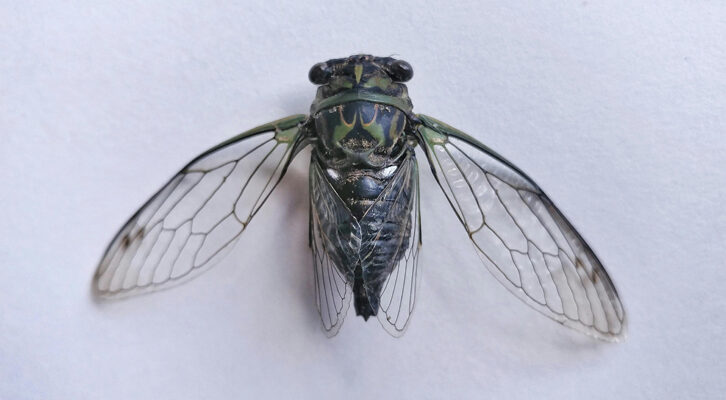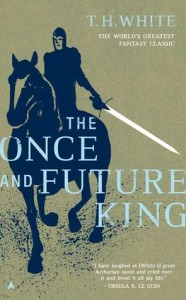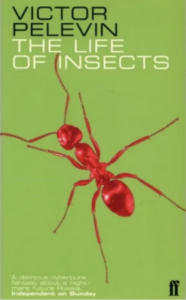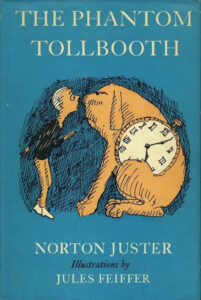
5 great bug books to read while you’re hiding from the cicada explosion.
Billions of cicadas are about to hatch this spring and summer, as both the 13- and 17-year cicada broods converge in one historic emergence. This overlap between broods happens just once ever 221 years, which makes it a much rarer natural phenomenon than the North American solar eclipse earlier this year—though I suspect fewer people are traveling to experience the bug burst.
Vox gathered some basics about the 2024 emergence and some fun cicada facts (or horrifying facts, depending on how you feel about bugs): cicadas can count, be zombified by a fungus, and are very bad at not being eaten. And if you want the hard science, UConn has a thorough website on cicadas, with a good FAQ and more detailed information on this year’s emergence.
But maybe you prefer your bugs between the covers of a book than wriggling out of the dirt in the billions. In addition to the insects in literature we all know—the “monstrous vermin” in The Metamorphosis, the peach-pit-dwelling bugs in James And The Giant Peach, Tolkien’s giant spiders, Charlotte the spider in Charlotte’s Web, Renfield’s meals in Dracula—here are a few other bugs and the books-they-appear-in to check out as you wait for the cicadas.

Ants in The Once And Future King by T.H. White
I’m a big evangelist for this 1958 book, which is a big and weird fantasy that reimagines the Arthurian mythos and grapples with a post-WWII world. The first volume follows the adventures of young Arthur, known as Wart, as he learns about the world. Part of this education involves being transformed by the wizard Merlyn into different animals, including an ant. Wart struggles to understand the ants’ world and their bleak lives defined by “done” and “not done,” and the boy is nearly killed when a war breaks out between nests. The section is a dreamy exploration of totalitarianism and the power of language, something these emerging cicadas might want to know more about before they join us up here aboveground.

Mosquitos, Beetles, Moths, and more in The Life of Insects by Victor Pelevin
A collection of short, surreal pieces about insects whose lives parallel those of humans. Some of them are affecting, like the section on the moths, and some are silly, like the beetles in weed joints, but the disorienting way that Pelevin’s characters move between human and insect, sometimes within the same sentence, makes for interesting reading. The book is uneven—and I wonder how its politics hold up—but the stories are full of bleak humor, social satire, and critical allegories about post-Soviet Russia and the world of the 1990s.
Check this one out if you’re looking for a very Russian take on the lives of insects, and a vivid description of a cockroach/cicada burrowing through dirt.

The Humbug, The Spelling Bee, and Demonic Snails in The Phantom Tollbooth by Norton Juster
I’m not sure if the elementary school kids are still as jazzed on this book as my friends and I were, but in my mind, this Juster and Feiffer classic of wordplay and silliness remains a high-water mark for bugs in books. The Humbug, a liar and a braggart who puffs that “history is full of Humbugs” like himself, is an all-time villain:
“And from around the wagon stepped a large beetlelike insect dressed in a lavish coat, striped pants, checked vest, spats, and a derby hat. “Let me repeat—BALDERDASH!” he shouted again, swinging his cane and clicking his heels in mid-air. “Come now, don’t be ill-mannered. Isn’t someone going to introduce me to the little boy?”
“This,” said the bee with complete disdain, “is the Humbug. A very dislikable fellow.”
I’m sure I read this book as a child while listening to the cicadas outside my window, and I encourage you to do the same this summer.

The Fly-Man Hybrid in The Fly by George Langelaan
Best known for the film versions, The Fly was originally a short story published in 1957. I only found out about the original recently, after rewatching the 1986 Cronenberg and Goldblum body-horror classic, and I found the story to be pretty fun. It’s a mad scientist’s confession nestled within a murder mystery and while he’s a little corny in places, Lengelaan has some wonderfully visceral descriptions that are well worth the read:
Until I am totally extinct, nothing can, nothing will ever make me forget that dreadful white hairy head with its low flat skull and its two pointed ears. Pink and moist, the nose was also that of a cat, a huge cat. But the eyes! Or rather, where the eyes should have been were two brown bumps the size of saucers. Instead of a mouth, animal or human, was a long hairy vertical slit from which hung a black quivering trunk that widened at the end, trumpet-like, and from which saliva kept dripping.
Speaking of creating new monsters, UConn’s bug scientists speculated on what would happen if this year’s periodical cicada broods interbred, and it’s thankfully nowhere near as disastrous and horrifying as what Langelaan is imagining.

Flora 717 in The Bees by Laline Paull
Set in a beehive, Paull’s fantasy follows one exceptional bee who is plucked from her sanitation job and fast-tracked for greater things. This book is dense with fantastical details about how bee society and culture look from the inside, but the prose never quite tips over into the overwrought invention that makes some fantasy writing so cringe-y.
If you’re looking to imagine some pathos and thrill for adventure in the minds of the cicadas popping up around you, this is the book for you.
James Folta
James Folta is a writer and the managing editor of Points in Case. He co-writes the weekly Newsletter of Humorous Writing. More at www.jamesfolta.com or at jfolta[at]lithub[dot]com.



















